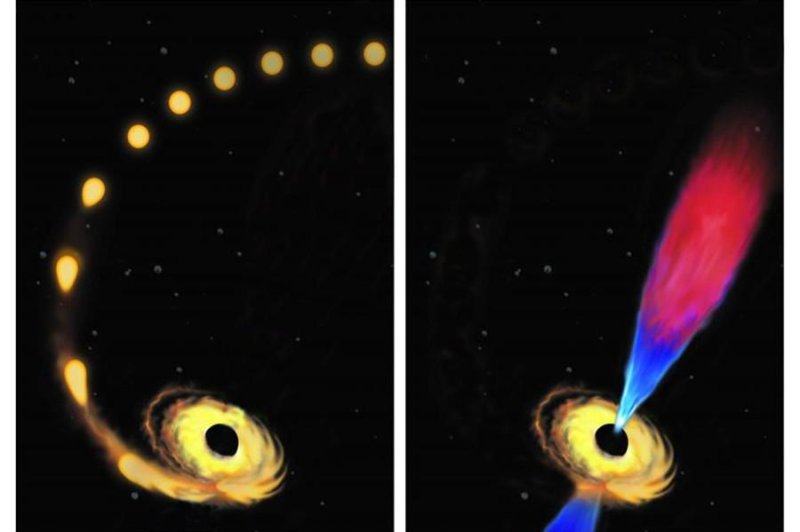An artistic rendering shows a star being sucked in and destroyed by a supermassive black hole, its consumption producing a bright jet. Photo by Amadeo Bachar/John Hopkins
BALTIMORE, Nov. 27 (UPI) -- Recently, a black star at the center of a nearby galaxy gorged itself on a whole star, and for the first time astronomers witnessed the brightly ejected flare that followed.
The star was first spotted by astronomers at Ohio State University. When they announced on Twitter that the star was in the process of being consumed by a black hole, Sjoert van Velzen, a Hubble fellow at Johns Hopkins, took note.
Van Velzen quickly organized an international team of astronomers to observe and analyze the event, arranging to have a number of telescopes and observatory instruments quickly redirect in its direction. They weren't too late.
"Previous efforts to find evidence for these jets, including my own, were late to the game," van Velzen said in a press release.
Observations of X-ray, radio and optical signals offered the astronomers a multifaceted, multi-wavelength recording of the event.
"These events are extremely rare," van Velzen said. "It's the first time we see everything from the stellar destruction followed by the launch of a conical outflow, also called a jet, and we watched it unfold over several months."
The results confirm what astronomers have long theorized, that bright streams of the destroyed star's leftover material would be condensed and shot back out from the black hole's rim in the form of a super fast jet.
"The destruction of a star by a black hole is beautifully complicated, and far from understood," van Velzen said. "From our observations, we learn the streams of stellar debris can organize and make a jet rather quickly, which is valuable input for constructing a complete theory of these events."
Van Velzen and his colleagues relayed their observations in a new paper, published this week in the journal Science.















